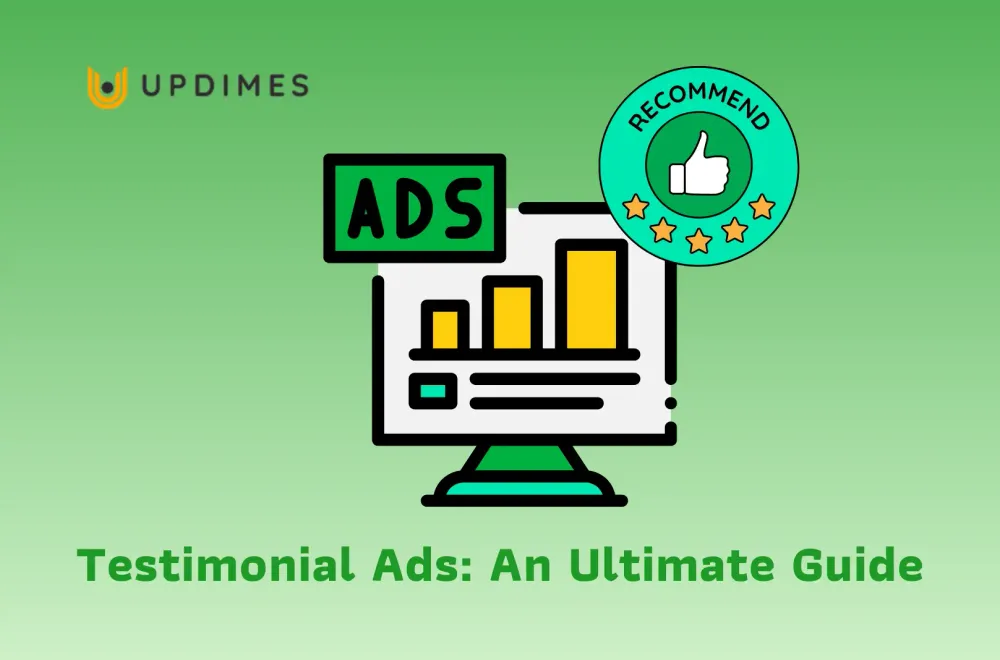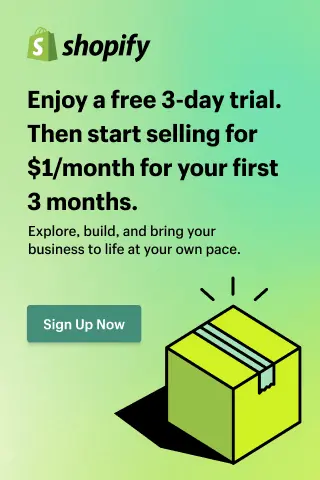Testimonial Advertising: An Ultimate Guide

Testimonial advertising is a powerful tool in modern marketing, leveraging the authentic voices of satisfied customers or influencers to build trust and credibility with potential buyers. In this guide, we explore the effectiveness, best practices, and diverse examples of testimonial ads across industries.
Whether you're a seasoned marketer or a novice, this ultimate guide equips you with the knowledge to harness the power of customer endorsements and elevate your brand's marketing efforts.
What are Testimonial Advertising?
Testimonial ads are marketing messages that feature endorsements or recommendations from satisfied customers or clients. These ads typically showcase personal experiences, opinions, or success stories about a product, service, or brand.
Testimonials aim to build trust and credibility with potential customers by providing real-life examples of positive outcomes. They can be presented in various formats, including written quotes, video testimonials, or audio recordings. Testimonial ads leverage the principle of social proof, where people are more likely to trust a product or service if they see evidence of others' satisfaction or approval.
Why are Testimonial Ads So Effective?
Testimonial ads are highly effective due to several key factors:
- Social proof: Testimonial ads capitalize on the psychological phenomenon of social proof, which suggests that people are more likely to follow the actions and opinions of others, especially when they are uncertain about a making purchase decision.
- Authenticity and credibility: Testimonials provide authentic voices of real customers who have experienced the product or service firsthand. This authenticity enhances credibility because it comes from individuals outside of the company, making it more trustworthy in the eyes of consumers.
- Tangible evidence: Testimonials offer tangible evidence of the benefits or results that the product or service can deliver. By showcasing specific outcomes or experiences, they provide concrete examples that potential customers can relate to, helping to alleviate any doubts or concerns they may have.
- Human element: Unlike traditional advertising that may rely solely on marketing claims, testimonials add a human element by featuring real people and their stories. This personal touch makes the message more relatable and emotionally engaging, drawing the audience in and making them more receptive to the ad's message.
- Emotional resonance: Testimonials often evoke emotions such as happiness, satisfaction, or even empathy. By tapping into these emotions, testimonials create a deeper connection with the audience, influencing their perceptions and attitudes towards the product or service.
- Persuasive impact: The combined effect of social proof, authenticity, credibility, emotional resonance, and tangible evidence makes testimonial ads highly persuasive. They are more likely to convince potential customers to take action, whether it's making a purchase, signing up for a service, or simply exploring more about the brand.
4 Types of Testimonial Advertising
Testimonial advertising can take various forms, each tailored to suit different platforms and target audiences. Below are 4 common testimonial ads types:
- Text testimonials: These are concise written endorsements from customers, often found in the form of reviews on product pages. They provide textual evidence of customer satisfaction and can be easily displayed on websites or marketing materials. You can use Ryviu app to collect more reviews and manage them easily on your online store.
- Image testimonials: Image testimonials go beyond words by visually capturing customers' positive experiences. Customers may share pictures of themselves using the product or enjoying the service, providing compelling visual proof of their satisfaction. These images can be shared on social media platforms, websites, or promotional materials.
- Video testimonials: Video testimonials add depth and authenticity to customer endorsements by featuring satisfied customers speaking about their experiences. These videos are highly engaging and can be shared on various platforms such as websites, YouTube, or social media channels. Video testimonials give potential online shoppers an opportunity to see and hear genuine feedback, making them particularly impactful.
- User-generated content (UGC) testimonials: UGC testimonials involve customers sharing their experiences with the brand through their content, such as social media posts, photos, or videos. This type of testimonial advertising leverages the power of word-of-mouth marketing and social proof, as potential customers see real people authentically sharing their positive experiences with the brand.
Testimonial Advertising: Best Practices
Here are three tips for creating effective testimonial ad campaigns:
Understand your audience
Tailor testimonials to resonate with your target demographic. Ensure they address specific pain points or desires of your audience and showcase how your product or service provides solutions. Prioritize testimonials that align closely with your target audience's needs and preferences to maximize their persuasive impact.
Highlight key advantages
Showcase diverse testimonials that highlight different features and benefits of your product or service. If you're promoting a specific feature or aspect of your offering, ensure testimonials emphasize its value and effectiveness. By showcasing a range of advantages, you can provide potential clients with a comprehensive understanding of their expected benefits.
Experiment with different marketing opportunities
Utilize various marketing channels and formats to amplify the reach and impact of your testimonials. Incorporate testimonials into your website, social media profiles, email campaigns, and paid advertisements. Experiment with testimonial videos, written quotes, and user-generated content across different platforms to identify which strategies resonate most effectively with your audience.
By understanding your audience, highlighting key advantages, and experimenting with different marketing opportunities, you can create testimonial ad campaigns that effectively engage and persuade potential customers, ultimately driving conversions and boosting your marketing efforts.
Examples of Testimonial Advertising
Let’s take a look at the testimonial ads examples below to get more inspiration for your campaigns.
Example #1: Calm
Calm, a popular meditation and relaxation app, effectively leverages testimonial advertising on LinkedIn. In its ad, an anonymous employee shares their positive experience with Calm, emphasizing its effectiveness in reducing stress. The testimonial's simplicity and relevance to LinkedIn users' professional context make it impactful. The endorsement from an employee adds authenticity and credibility to the testimonial, making it relatable to potential users who may also experience stress in their work lives.
Example #2: Headspace
Headspace, another meditation app, utilizes vibrant visuals and a compelling quote in its testimonial ad. The ad features a runner who credits guided meditation on Headspace for providing peace of mind during runs. This testimonial appeals to runners and a broader audience, encouraging them to consider the app's versatility in various activities. By sparking curiosity and highlighting real-life use cases, Headspace effectively engages potential users and showcases the value of its meditation offerings.
Example #3: Dove
Dove employs video testimonials to promote its deodorant product in a compelling ad. The ad features real individuals, not actors, trying the product and sharing their thoughts. Despite being staged, the testimonials appear authentic, enhancing the product's credibility and effectiveness.
By allowing individuals to experience the product firsthand and discuss their experiences openly, Dove creates a sense of trust and transparency. The ad's format allows for multiple testimonials to be showcased within a single narrative, maximizing impact and conveying the product's benefits convincingly.
Example #4: Grammarly
Grammarly delivers a powerful testimonial ad by connecting the precision of sushi-making to the intricacies of writing. The ad features Kaz Matsune, highlighting the parallels between perfecting sushi rolls and crafting sentences. Matsune's personal story as a non-native English speaker who succeeds in writing with Grammarly's assistance adds authenticity and emotional resonance to the testimonial.
By framing the testimonial within a relatable context and emphasizing the transformative impact of Grammarly on language proficiency, the ad effectively persuades viewers of the product's value and relevance.
Example #5: Salesforce
Salesforce employs storytelling in its testimonial ad to convey its brand message effectively. The ad features a compelling narrative of a former cotton field worker who rises to become a director, attributing their success to Salesforce's support. The rags-to-riches story resonates with viewers, evoking feelings of aspiration and possibility.
By highlighting Salesforce's role in empowering individuals to achieve their potential, the ad positions the brand as a catalyst for success and personal growth. Through the power of storytelling, Salesforce creates an emotional connection with its audience, compelling them to consider the transformative impact of its services.
Testimonial Ads: FAQs
What are examples of testimonials?
Testimonials are statements or endorsements from satisfied customers or clients that attest to the quality, effectiveness, or value of a product, service, or experience. Examples of testimonials include:
- Written reviews or comments on a website or social media platform.
- Video testimonials featuring customers sharing their positive experiences.
- Quotes from satisfied clients included in marketing materials.
- Endorsements from celebrities or influencers.
- Case studies highlighting successful outcomes.
What are some examples of testimonial propaganda?
Testimonial propaganda utilizes endorsements or testimonials to influence people's opinions, beliefs, or behaviors. Examples include:
- Political endorsements where public figures or celebrities endorse a candidate.
- Celebrity endorsements in advertisements for products or services.
- Testimonials from satisfied customers used in marketing campaigns to persuade others to buy a product.
- Expert endorsements in commercials or advertisements promoting specific brands or products.
What is the testimonial technique used in advertising?
The testimonial technique in advertising involves using endorsements or testimonials from satisfied customers, experts, celebrities, or influencers to promote a product or service. This technique aims to build credibility, trust, and relatability with the target audience by showcasing positive experiences or opinions from others.
Is an infomercial a testimonial?
An infomercial typically includes elements of testimonial advertising but is not solely focused on testimonials. Infomercials are longer-form television commercials that often feature product demonstrations, testimonials, expert endorsements, and persuasive sales pitches. While testimonials may be part of an infomercial, they are not the sole component, as infomercials often provide detailed information about a product or service and its benefits in an extended format.
Final Thoughts
Testimonial advertising is essential for cultivating trust and engagement with consumers. By incorporating best practices, brands can leverage customer endorsements to drive conversions and foster brand loyalty. Remember, testimonial advertising goes beyond showcasing products—it's about connecting with consumers on a personal level and inspiring trust that transcends transactional relationships.
